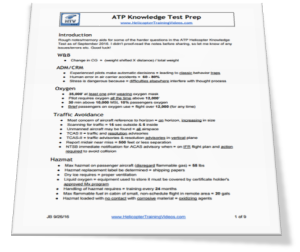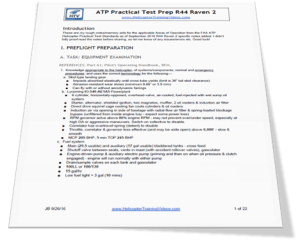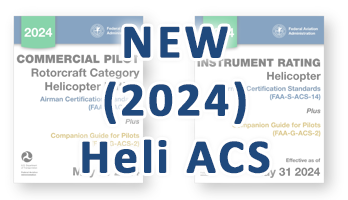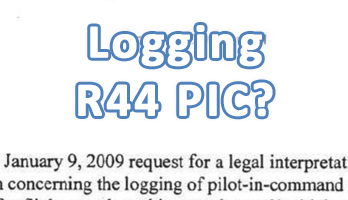In late 2016 I went through the process of taking the Airline Transport Pilot (ATP) Helicopter checkride and I wanted to help others who might go that way.
Essentially there are three parts to getting your Helicopter ATP:
- Meet the experience requirements
- Pass the ATP Knowledge Test (Written)
- Pass the ATP Practical Test (Checkride)
Experience Requirements
Aeronautical experience requirements for ATP helicopter are outlined in the FAA regulations (FAA Regulation §61.161 – Aeronautical experience: Rotorcraft category and helicopter class rating). A brief summary:
- 1,200 hours of total time
- 500 hours of cross-country flight time (at least 25NM from departure)
- 100 hours of night flight time, of which 15 hours are in helicopters
- 200 hours of flight time in helicopters (including 75 hours as PIC)
- 75 hours of instrument time (actual or simulated) of which 50 hours in flight with at least 25 hours in helicopters as a PIC. Up to 25 hours can credited towards the 75 hours, in simulator or flight training device (50 hours if at part 142 program)
- Additionally you need to already have your Commercial with Instrument rating and be at least 21 years old (§61.153)
The requirements that many people struggle with are the 100 night and 75 hours instrument time. Once you leave the flight schools your first job will likely be flying tours, which are mostly daytime with no ‘hood time’. So don’t leave the flight school without 100 hours night & 75 hrs instrument time (50 in the aircraft) as you will likely struggle to build those in your next job. My advice is do your instrument training at night to help build night hours.
ATP Knowledge Test (‘The Written’)
Like many current FAA Knowledge Tests for helicopter certificates/ratings, you will be frustrated with what appears to be airplane-centric questions (like asking about clear air turbulence in the upper atmosphere, etc.). This was the worst one of all the FAA written tests I’ve taken and I found it very exasperating to study for, but there ways to make it as easier:
- Use good preparation software (Dauntless) to help maximize your studying efficiency (trust me on this!) and/or use our recommended books.
- Set an alarm/reminder/routine to do a set number of questions each day (bite-sized chunks)
- Create a study guide/reference sheet for the ones you are having problems with or use the one I created (ATP Knowledge Test Prep PDF):
Get the knowledge test done and then you can forget most of it and start to focus/study what is needed for the practical test…
ATP Practical Test (‘The Checkride’)
The best place to start preparation for any practical test is the FAA Practical Test Standards (PTS) for the certificate/rating you are going for. The PTS is an outline of how the checkride will go and what the examiner will ask you to explain on the ground or demonstrate in flight. You can get an ATP Helicopter PTS (PDF format) direct and free from the FAA here or paper version if you prefer. Check out all our recommended books for ATP. Like for the knowledge test, I also recommend you create a study guide for the practical test (based on the PTS and aircraft you intend to fly) or use the one I created for my checkride (R44 Raven 2 ATP Practical Test Prep PDF):
Just like any previous checkride you have taken, there are two parts, the ground and the flight:
Ground Overview
Mostly a discussion on systems and performance for the aircraft you have selected to fly (so get back into that POH!):
- Knowledge of systems/components and normal and emergency procedures
- Performance and limitations and the adverse effects of exceeding any limitation
- Demonstrate proficient use of performance charts (including calculating W&B)
- Locating and explaining documents such as airworthiness and registration certificates, manuals & MEL (if appropriate)
- Maintenance requirements (required inspections, records), pilot maintenance etc.
Flight Overview
Essentially an instrument checkride with a few extras:
- Instrument departure
- Rejected takeoff
- Steep turns
- Recovery from unusual attitudes
- Simulated engine failure at altitude & on takeoff
- Settling with power
- 2 Precision approaches with max 1/4 scale glide slope and localizer deflection at DA
- 2 Non-precision approaches (one with procedure turn) with max 1/4 scale deflection on final segment and within 50′ of MDA (but not below)
- Holds
- 2 Missed approaches, one from precision approach
- 4 approaches/landings to a hover
- Rejected landing (go-around)
- Emergency procedures
Good luck! Please use this link to let us know how it went and if this post helped or what we could add to make it better.







